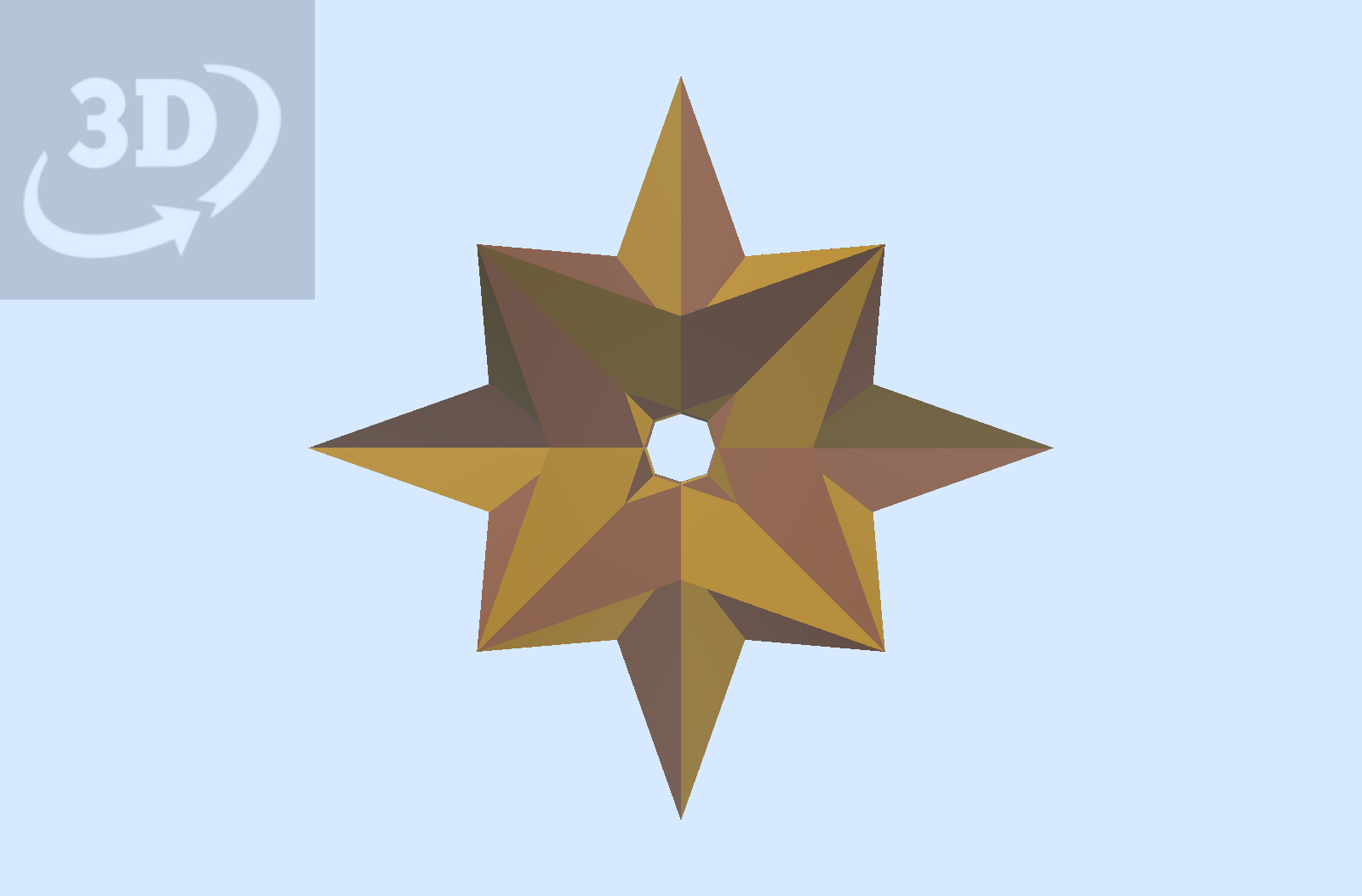This illustrates an aspect of the transformation of edges of an Octahedron. As shown in Twelve Edge Transformation 2, edges of an Octahedron can be simultaneously rotated about lines from midpoints to the origin, through a sequence of skew orientations, one orientation where the rotated edges align in parallel sets, and one where the struts align in planes. Extending these lines to intersect gets to four interlinked triangles. Here the focus is on this four triangle arrangement, and on skew orientations that are adjacent, before and after the lines intersect. The first model in the Scenes dropdown menu shows the 4 triangles and 2 sets of skew oriented struts, one white, “before” the triangles, and one Lavender, “after” the triangles.
A 3D design created in vZome. Use your mouse or touch to interact.

The four triangle array is chiral, as are the skew configurations. Here, the lines of the triangles are taken as heartlines of paneled prisms that fill out the openings formed by the adjacent sticks in the array. The paneled triangles are scaled to make the surfaces meet adjacents. In the model above, both right-handed and left-handed triangle arrays are shown in a combination. In Scenes, the skew alignments are also shown as paneled prisms built around heartlines, which are scaled to have sticks in contact, with coplanar facets. They are shown in the sequence; “before intersection”, four triangles, and “after intersection”, showing 2 models.
The origins of my explorations of symmetry and structural integrity lie in models such as these, made from simple parts that act only as linear elements, tensions and compressions. Working within these constraints, intersections of coplanar struts is disallowed, as it means a departure from simple bypass connection, one must do some alteration, like notching, deflection, or mitre joining, that involves more complex forces. So to build a triangle, round profile sticks can be pulled into contact as they pass by each other, with the points of contact defining the vertices of the triangle. Stable structures are found with bypassing connections in groups of 3. I did not know for sure that such structures could be constructed in vZome, as it meant defining profiles for prisms in these skew orientations. There are “automatic” directions to work with, but the process pushes against some limitations, as I learned. With some help and direction from Scott Vorthmann, I was able to construct these models.